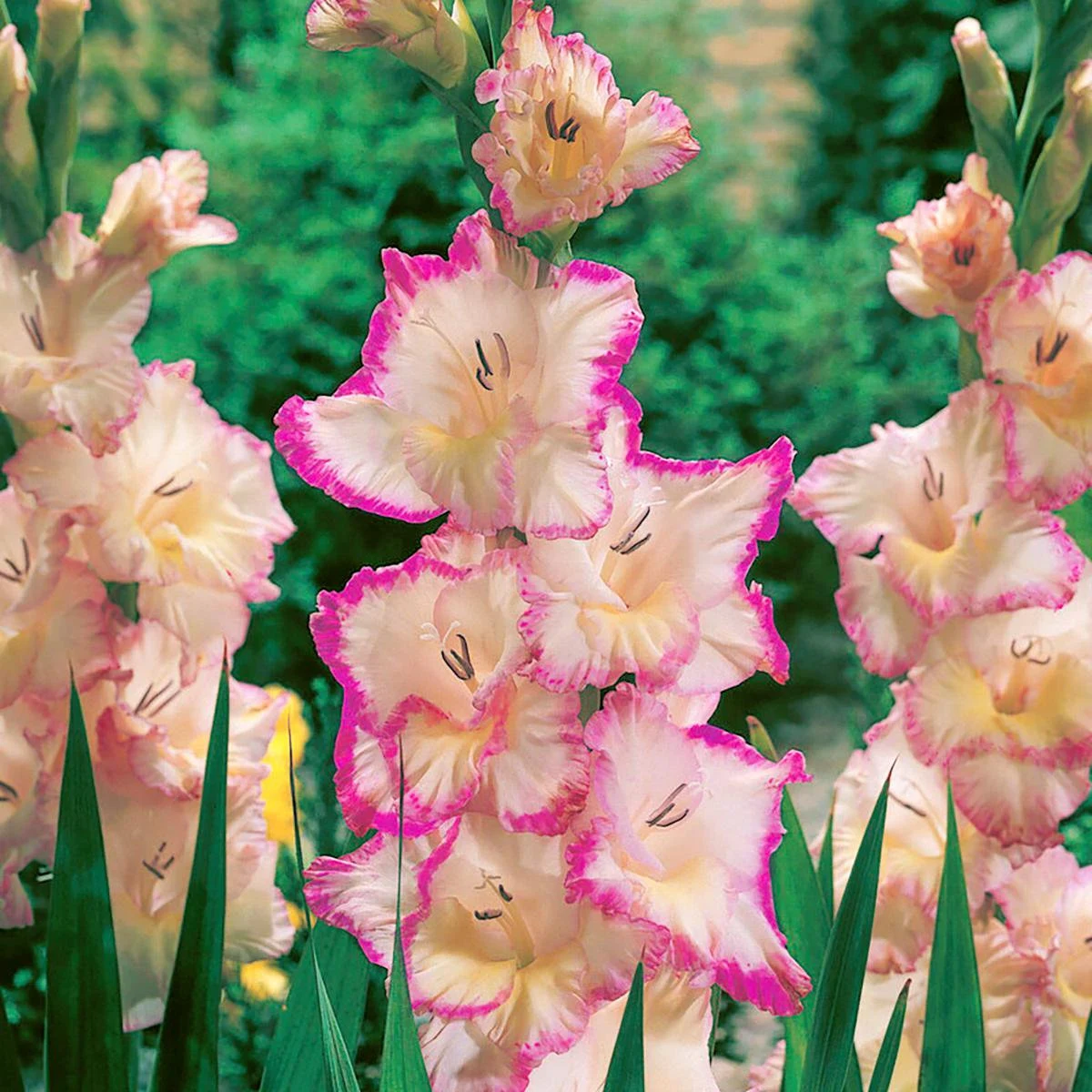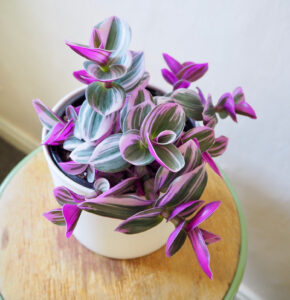Overview
- Common Name: Priscilla Gladiolus
- Botanical Name: Gladiolus x hortulanus ‘Priscilla’
- Plant Type: Tender perennial (grown as an annual in most zones)
- Height: 3 to 5 feet tall
- Spread: 6 to 12 inches
- Bloom Time: Mid to late summer
- USDA Hardiness Zones: 8–11 (lift and store corms in colder zones)
- Flower Color: Soft pink with white and darker rose accents
- Use: Cut flowers, borders, flower beds, containers
Light Requirements
Priscilla gladiolus thrives in full sun. Aim for:
- 6–8 hours of direct sunlight daily
- A spot with morning sun and good air circulation
They’ll tolerate part sun, but too much shade leads to weaker stems and fewer blooms.
Soil Needs
Well-draining soil is critical for gladiolus.
Ideal Soil Conditions:
- Loamy or sandy soil
- pH between 6.0 and 7.0 (slightly acidic to neutral)
- Add compost or aged manure to enrich the planting area
- Avoid soggy areas—wet feet = rotted corms
Planting Time & Instructions
Plant after the last frost when soil is warm (60°F/15°C or higher). In cooler zones, stagger plantings every 2 weeks from spring through early summer for continuous blooms.
How to Plant:
- Depth: 4 to 6 inches
- Spacing: 6 inches apart
- Pointed side up, flat side down
- Plant in rows, clusters, or groups of 5–7 for a fuller look
Watering Schedule
Gladiolus needs consistent watering, especially during growth and bloom time.
Watering Tips:
- 1 inch per week during dry spells
- Keep soil moist but not soggy
- Water at the base—avoid wetting foliage to reduce disease risk
- Mulch helps retain moisture and keeps weeds down
Staking & Support
Because Priscilla can grow up to 5 feet, wind or heavy blooms may cause flopping.
- Use garden stakes, bamboo canes, or flower rings
- Insert supports at planting to avoid damaging roots later
- Tie loosely with twine as they grow
Deadheading and Maintenance
- Remove faded flowers promptly to keep the plant looking tidy and to encourage more blooms.
- Let the leaves remain after flowering—they photosynthesize to feed the corm for next year’s growth.
- Cut the foliage only after it turns yellow and dies back naturally.
Fertilization
Feed gladiolus to promote lush growth and better blooms.
Feeding Routine:
- Before planting: Mix a balanced fertilizer (10-10-10) into the soil.
- When spikes form: Feed with a low-nitrogen, bloom-boosting fertilizer (like 5-10-10).
- After blooming: A final light feeding helps build the corm.
Avoid over-fertilizing with nitrogen—it promotes leaves over flowers.
Pests & Problems
Gladiolus are relatively easy, but watch for:
Common Pests:
- Thrips: Tiny insects that distort flowers and leaves Use insecticidal soap or neem oil; store corms properly to prevent overwintering
- Aphids: Can be sprayed off with water or treated with neem oil
- Spider mites (in dry, hot conditions)
Diseases:
- Botrytis (gray mold): Caused by moisture—improve air circulation and avoid overhead watering
- Corm rot: Due to poor drainage—lift and inspect corms if you see wilting despite watering
Always buy healthy, firm corms from reputable sources.
Winter Care (Corm Storage)
In zones 7 and colder, gladiolus won’t survive the winter outdoors. You’ll need to lift and store corms:
Steps:
- After first light frost, cut back foliage to about 1–2 inches.
- Carefully dig up the corms, shake off soil.
- Let them dry for 2–3 weeks in a warm, dry place with good airflow.
- Remove old, shriveled corms from the base (new ones grow on top).
- Store in a cool, dry, dark place (like a basement or garage) in mesh bags or cardboard boxes with peat moss or sawdust.
- Check periodically for rot or mold.
Cut Flower Tips
Priscilla gladiolus makes a stunning cut flower!
- Cut when bottom 2–3 flowers on the spike are just opening
- Use a sharp knife, and cut early in the morning
- Remove lower leaves and place in water immediately
- Add floral preservative for longer vase life
They can last 7–10 days indoors with proper care.
Companion Plants
Plant Priscilla gladiolus with:
- Salvia
- Dahlias
- Coneflowers
- Liatris
- Zinnias
- Dusty Miller
Low-growing plants help hide the base of the gladiolus and create visual balance.
Design Ideas
- Cottage gardens: Their frilly look fits right in
- Vertical accents in borders or beds
- Mass plantings for a dramatic floral wall
- Mix with white, lavender, or purple flowers for contrast
- Grow in large containers with support for smaller garden spaces
Propagation
- Priscilla is propagated by corm division.
- At the end of the season, the mother corm produces “cormels” (baby corms).
- You can plant these the next season—though they take 1–2 years to bloom.
Fun Facts
- Gladiolus comes from the Latin “gladius,” meaning sword, referencing the shape of the leaves.
- Also known as the “sword lily”.
- Symbolizes strength, moral integrity, and infatuation—making it a meaningful bouquet flower.
Quick Care Recap
| Need | Care |
|---|---|
| Light | Full sun (6–8 hrs/day) |
| Soil | Well-draining, fertile |
| Water | 1 inch/week during growth |
| Bloom Time | Mid to late summer |
| Fertilizer | 10-10-10 at planting, bloom booster mid-season |
| Height | 3–5 feet |
| Hardiness | Zones 8–11 (lift in colder zones) |


